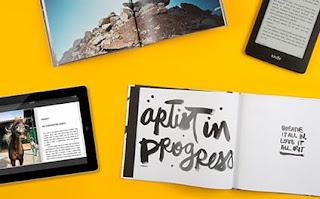Beginning:
The easiest way of doing this is to login with Blurb and download Bookwright onto a laptop or home computer rather than try to do this at college. The college computers' hardware are not really up to date .
Familiarise yourselves with the system, try and work your way around this as all instructions are on the system and it will be a lot easier if you have had a play at home.
Bring laptop into college to work on (if possible but do not leave this unattended).
Bring in USB stick in with 6GB upwards of memory .VERY IMPORTANT
Scan at 300 DPI on the flatbed scanners ( make sure these are clean)
Save to one drive and copy to USB. Bookwright will only recognise this, not one drive on our computers.
If you are signing into Bookwright at college:
Go to the Start menu
Type in Software centre
Download Bookwright
You only have to do this once on a college computer if it has not yet been done on this machine.
If the message updates pops up, then cancel this.
Next ...
Choose your size book from Blurb, there are 6 sizes to choose from
The most popular is 20 x 25 cm:
Please see Bookwright but these are :
Mini Square
Small Square
Standard Portrait 20 x 25 cm
Standard Language
Large Square
Large Landscape
Resizing Images so that you can drop these in easily to your book pages:
Edit your images, this is easiest on your phone if you are able, otherwise use Photoshop:
In Photoshop:
FileNew
Custom
Change to cms and put your dimensions in so in this case 20 x25 cm
Resolution 300 DPI
Create
Drag your image/photo onto the tab in Photoshop
Ctrl T - will transform image
Shift and use mouse to scale
Look at this link for simple steps:
https://www.youtube.com/watch?v=Bi4jJnYLkUA
It is best if you can keep it simple but do ask Amanda, Josh or someone who knows Photoshop well for advice.















